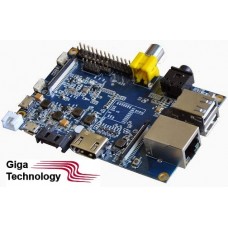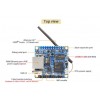Shopping Cart
0 item(s) - R0.00- 3D Printing and Plastic peripherals (8)
- 433Mhz and Lora (9)
-
Amateur Radio (651)
- - Antenna Analyzer (12)
- - APRS (12)
- - ATU (5)
- - CW (1)
- - Digital Modes (9)
- - DMR (4)
- - Echolink (10)
- - Enclosure (13)
- - Eshail-2 (QO-100) (67)
- - GPS (8)
- - iGate (1)
- - Microcontrollers (43)
- - Microphone (1)
- - Power Supply (7)
- - Programming Cable (6)
- - QRP (9)
- - Radio interface (21)
- - Receiver (9)
- - Repeater (4)
- - RF Amplifiers (20)
- - RF Kits (19)
- - RF modules (116)
- - Rotator (1)
- - SDR (75)
- - Spectrum Analyzer (4)
- - SWR (9)
- - Transceiver (59)
- - WSPR (5)
- Antennas and Acc (320)
- Audio and Video (28)
- Bargain Box (1)
- Battery (3)
- Bluetooth (11)
- Cables (37)
- Computer Peripherals (104)
- Connectors (90)
- Data acquisition (1)
- Display (2)
- Electromechanical (25)
- Enclosure (12)
- GPS (6)
- Hardware (3)
- Home Automation (128)
- Inverter (9)
- Liquid (7)
- Lora (8)
- Microcontrollers (119)
- Modbus (3)
- MQTT (14)
- Network Radio (3)
- Networking (8)
- Power (133)
- Power supply (49)
- Radio Interface (17)
- RF Modules (142)
- ROIP (2)
- Satellite (93)
- Security (13)
- Sensor (17)
- Solar (14)
- Test and Measurements (66)
- Tools and Equipment (8)
- VOIP (10)
- Weather (1)
Banana Pi (Same as Raspberry PI but with more functionality and speed)
Ex Tax: R1,098.00
Add to Compare
Banana Pi

Interface compatibility
|
Description |
Banana Pi |
Performance |
|
CPU performance |
Faster A20 CPU |
ARM Cortex-A7 Dual-Core 1GHz |
|
Memory Performance |
More Memory |
1GB DDR3 SDRAM (shared with GPU) |
|
SD card Performance |
Storage is only really limited by SATA |
SD (Max. 64GB) / MMC onboard |
|
IDE performance |
Has SATA interfaces there is no limit |
Hard disk drive (Large hard drives storage ) |
|
Network performance |
Faster Ethernet port 1G |
10/100/1000 on A20 not Shares |
|
USB performance |
USB 2.0 ports |
2 on A20 (not shared) so it is faster |
|
Interface boards availability |
All Raspberry Pi boards should work |
|
|
Operating system compatibility |
Android, Lubuntu, Raspbian, Kali Linux, openSUSE, fedora 1.1, Arch Linux 1.1 |
|
|
Video output |
Support HDMI 1.4 better |
HDMI 1.4, composite RGBCVBS , LVDS on board |
|
Power consumption |
||
|
GPIO(2X13) pin |
GPIO, UART, I2C bus, SPI bus with two chip selects, CAN bus, ADC, PWM, +3.3v, +5v, ground. |
|
|
Power consumption |
5V (2A) |
(not the most economical) |
|
LED. |
Power Status LED (Red). Ethernet Status LED (Blue). User Define LED (Green). |
|
|
Overall experience |
Ok we have the overall picture lets decide on the operating system
OS Images For Banana Pi: http://www.bananapi.com/index.php/download?layout=edit&id=29
|
OS |
Description |
|
Android 4.4 (Beta 1) |
|
|
Android 4.2.2 |
|
|
Lubuntu 3.1 |
My choice due to most of my exiting servers is Ubuntu |
|
Raspbian 3.1 |
This is good choice if you want to use the ad don Raspberry Pi features and functions such as spi, i2c , pwm and so on |
|
Kali Linux 1.0 |
|
|
openSUSE 1.1 |
|
|
fedora 1.1 |
|
|
Arch Linux 1.1 |
|
Now let me create my boot SD card.
down Lubuntu 3.1 from here http://www.bananapi.com/index.php/download?layout=edit&id=29
Con3 (GPIO Header)
|
CON3 |
Pin Name |
Multiplex Function Select |
GPIO |
|
Multi 1 |
Multi 2 |
||
|
Pin 1 |
3.3V1 |
VCC-3V3 |
|
|
Pin 2* |
5.0V1 |
VCC-5V |
|
|
Pin 3 |
SDA |
TWI2-SDA |
PB21 |
|
Pin 4* |
5.0V2 |
VCC-5V |
|
|
Pin 5 |
SCL |
TWI2-SCK |
PB20 |
|
Pin 6 |
GND3 |
GND |
|
|
Pin 7 |
IO-GCLK |
GPCLK |
PI3 |
|
Pin 8 |
TXD0 |
UART3-TX |
PH0 |
|
Pin 9 |
GND1 |
GND |
|
|
Pin10 |
RXD0 |
UART3-RX |
PH1 |
|
Pin11 |
IO-0 |
IO-0(UART2-RX) |
PI19 |
|
Pin12 |
IO-1 |
IO-1 |
PH2 |
|
Pin13 |
IO-2 |
IO-2(UART2-TX) |
PI18 |
|
Pin14 |
GND4 |
GND |
|
|
Pin15 |
IO-3 |
IO-3(UART2-CTS) |
PI17 |
|
Pin16 |
IO-4 |
IO-4(CAN_TX) |
PH20 |
|
Pin17 |
3.3V2 |
VCC-3V3 |
|
|
Pin18 |
IO-5 |
IO-5(CAN_RX) |
PH21 |
|
Pin19 |
SPI-MOSI |
SPI0_MOSI |
PI12 |
|
Pin20 |
GND5 |
SPI0_GND |
|
|
Pin21 |
SPI-MISO |
SPI0-MISO |
PI13 |
|
Pin22 |
IO-6 |
IO-6(UART2_RTS) |
PI16 |
|
Pin23 |
SPI-CLK |
SPI0_CLK |
PI11 |
|
Pin24 |
SPI-CE0 |
SPI0_CS0 |
PI10 |
|
Pin25 |
GND2 |
GND |
|
|
Pin26 |
SPI-CE1 |
SPI0_CS1 |
PI14 |
Looking at the Con3 26-pin general-purpose input-output (GPIO) header at the top-left of the board, which is pin-compatible with existing Pi accessories
J11 (UART)
The jumper J11 is the UART interface. For developers of Banana Pi, this is an easy way to get the UART console output to check the system status and log message.
|
CON1 Pin |
Pin Name |
GPIO |
|
CON1 P01 |
LINEINL |
|
|
CON1 P02 |
LINEINR |
|
|
CON1 P03 |
VCC-CSI |
|
|
CON1 P04 |
ADC_X1 |
|
|
CON1 P05 |
GND |
|
|
CON1 P06 |
ADC_X2 |
|
| CON1 P07 | FMINL |
Diagrams of Banan Pi




Write a review
Your Name:Your Review: Note: HTML is not translated!
Rating: Bad Good
Enter the code in the box below:
Giga Technology © 2025














